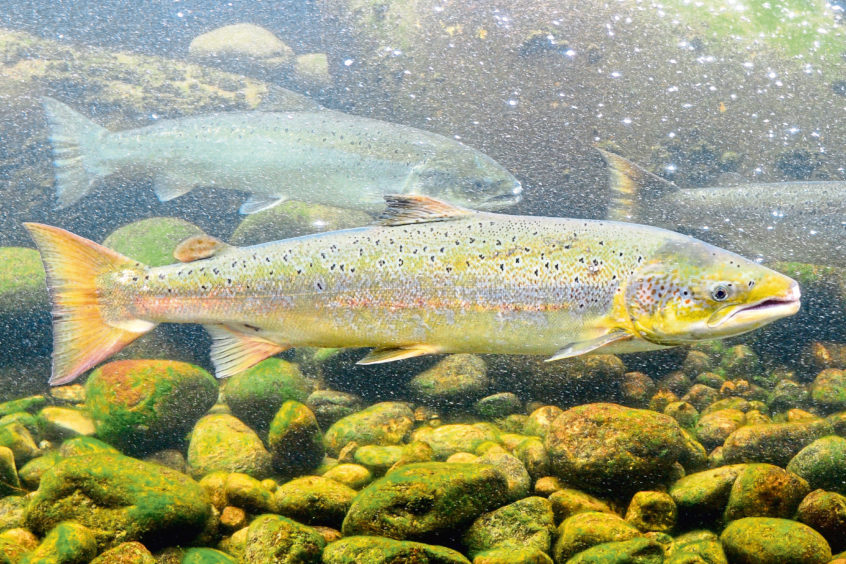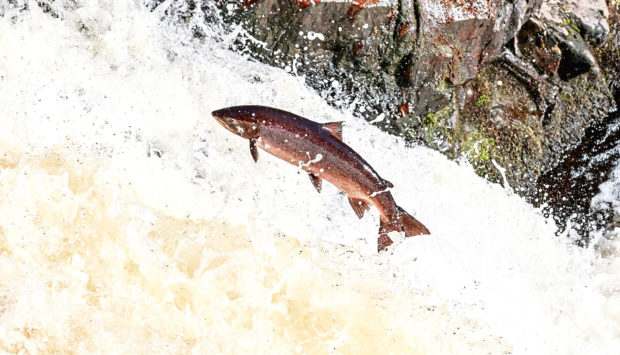Salmon spawn in November and December.
The female excavates a furrow in the riverbed with her tail to lay eggs, which are then fertilised by the male. A few months later, the tiny alevins (fry) emerge.
A lightning glint of movement out on the River Tay and a salmon jumps high into the air and falls back into the water with a thunderous splash, leaving behind diminishing ripples that are swept away by the powerful current.
I was on the riverbank near Luncarty, a few miles north of Perth, the river here flowing with real strength and purpose. I was surprised to see a salmon so low down on the river at this time of year, as I presumed most would be on their spawning grounds on the higher reaches. This fish was either a late runner or perhaps was intending to spawn in one of the lower tributary burns.
Whatever the case, there were certainly plenty of other fish such as trout on this part of the river, judging by the numbers of cormorants, herons and goosanders about.

For such a large fish, it is astonishing how far up the headwaters salmon will go to spawn, often in places where the main river course and associated burns are narrow and shallow. I recall when hiking in the Cairngorms, or in the Angus glens, coming across salmon in such high burns. When watching one resting on the stream bed, tail slowly waving, it is hard to imagine that only a few months previously it may have been swimming in the deep oceanic waters off Iceland and Greenland.
Most salmon succumb after spawning, their bodies emaciated and wrecked from months of fasting, combined with the effort of running the river and negotiating tumbling waterfalls and gushing narrows.
When I lived in Aberdeenshire, I occasionally discovered the corpses of spent salmon along the River Dee and its tributaries during early winter. At the time, great black-backed gulls on the Dee had developed the habit of scavenging for these bodies, their large black-and-white ghostly forms swooping between the alders in search of this piscine bounty.
Other creatures, too, take advantage of a river’s seasonal offerings, especially after torrential rain when the banks burst and water spreads across the flood meadows like a creeping tide. Such floods are a disaster for field voles, who have to flee the rising waters. But one animal’s calamity is another’s fortune, and herons, crows and magpies will gather by the water’s edge on the look-out for retreating voles to snap-up, as well as invertebrates such as worms emerging to the surface.
It is a case of the river delivering both life and death. The pools and ditches replenished by these autumnal and winter floods form valuable refuges for amphibians and a vast range of invertebrates.
Plant seeds will also have been dispersed by the rising waters, bringing vibrant colour to the flood meadows come the spring. Indeed, it is hard to imagine a more wondrous experience than exploring my local haugh in May when pastel-hued cuckooflower is in full bloom, attracting orange-tip butterflies which swoop and swerve above the meadow on delicate tangerine-edged wings.









